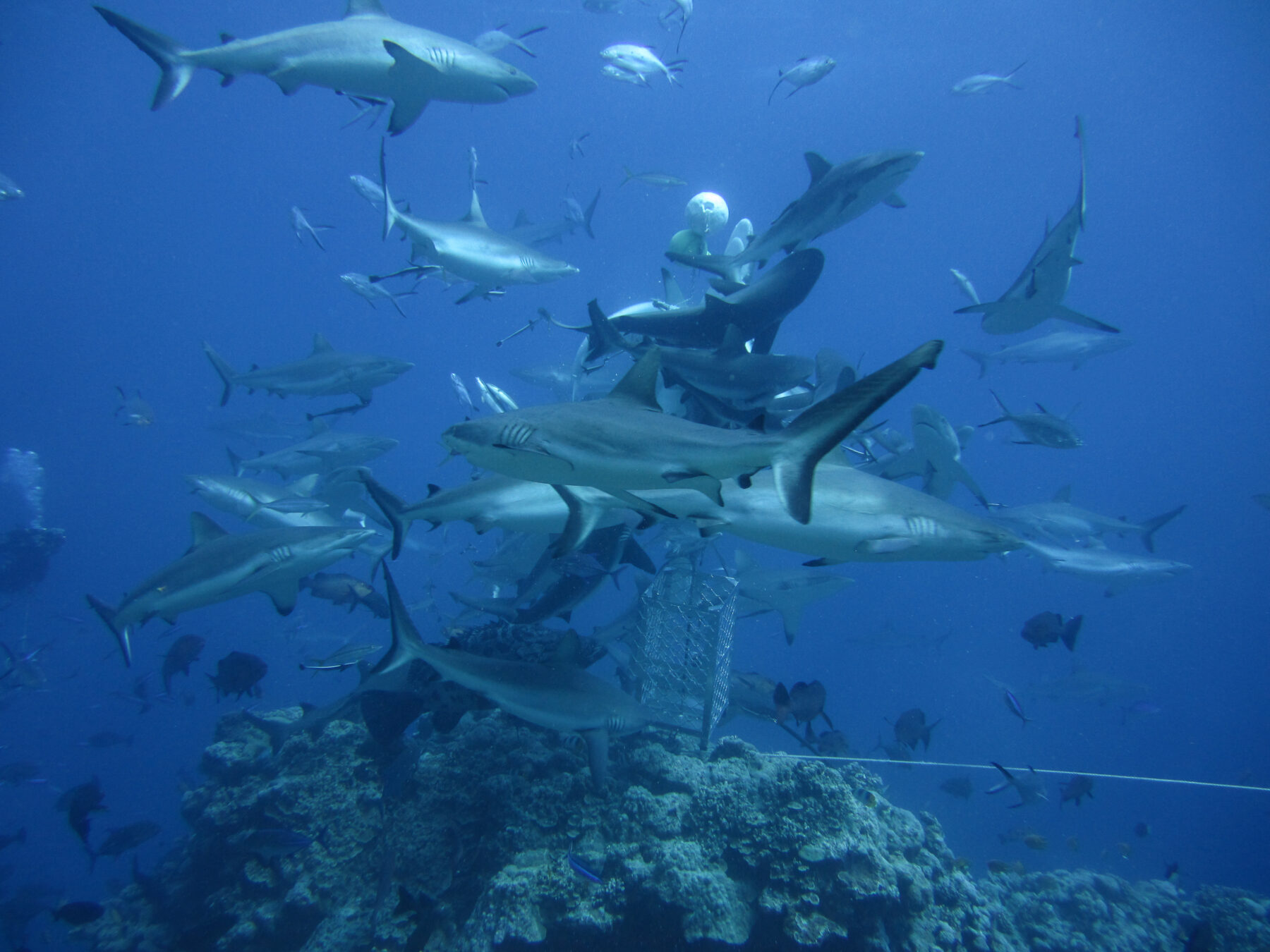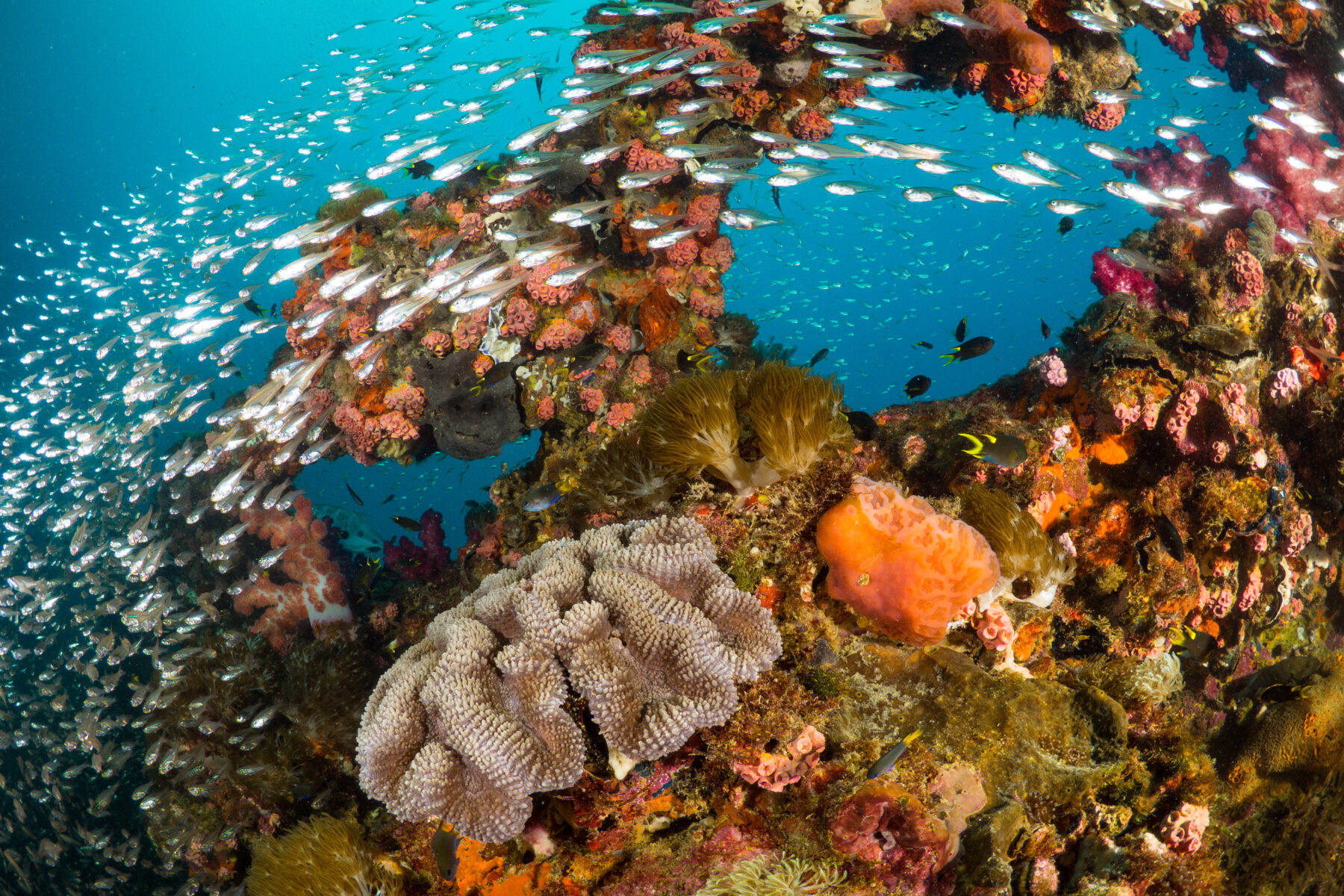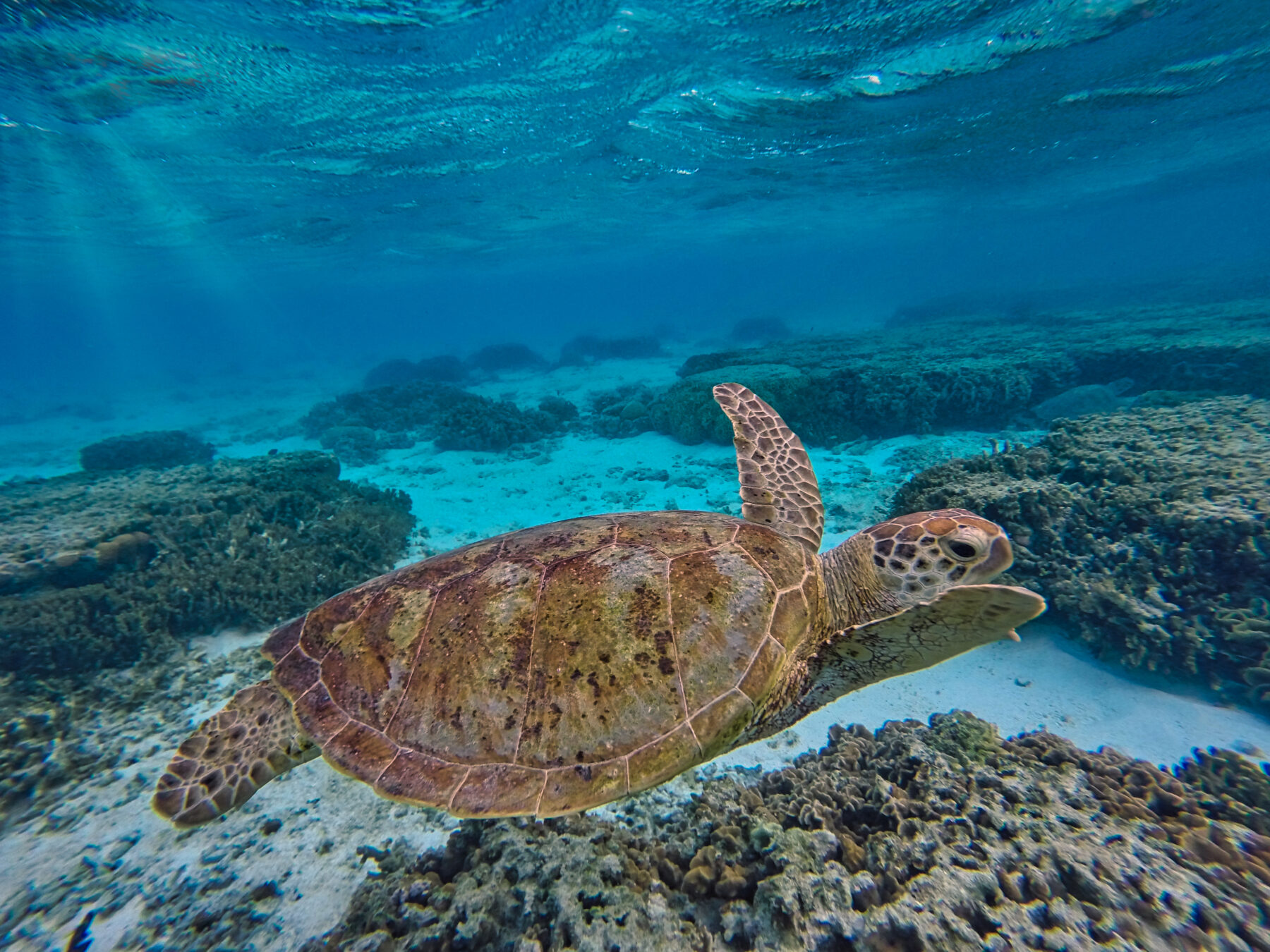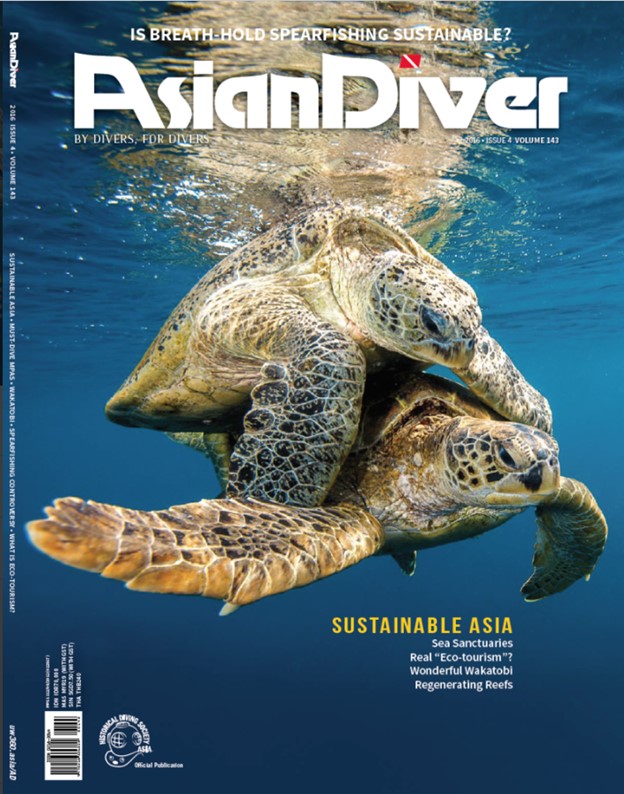An aerial shot of the gorgeous Great Barrier Reef
One of the natural wonders of the world, the Great Barrier Reef is the largest coral reef system on the planet. Although several shallow parts of the reef have undergone severe bleaching due to climate change, many of the deeper sites and outer reef remained unbleached. Here are 5 of these sites that you can explore when diving at the reef.
Text by Dave Harasti
Images from Shutterstock
1. OSPREY REEF

Max. Depth: 50m+
Viz: 30m
Site Type: Wall diving
Highlights: Shark feeding at North Horn where grey, black and whitetip sharks are abundant. Also lots of large reef fish such as coral trout and cods
Difficulty (1-5): 2
Challenges: Very deep walls so maintaining appropriate depth is important
2. SS YONGALA

Max. Depth: 30m
Viz: 20m
Site Type: Shipwreck
Highlights: Considered by many to be one of the best wreck dives in the world. Bull sharks, leopard rays and large Queensland groupers can be found on the wreck
Difficulty (1-5): 4
Challenges: Strong currents
Essential Kit: Nitrox to extend bottom time
3. HERON ISLAND

Max. Depth: 30m
Viz: 10-20m
Site Type: Patch reef, walls
Highlights: Heron Bommie is the most famous site with 6 large coral heads that go from 5 to 18 metres. Turtles are abundant around Heron, and manta rays, Queensland groupers and reef sharks are often seen
Difficulty (1-5): 1
4. RIBBONS REEF
Max. Depth: 40m
Viz: 30m
Site Type: Walls, Patch reef and large bommies
Highlights: Steve’s Bommie and Temple of Doom are two very large bombora sites covered in colourful corals and have masses of fish. Also can contain numerous macro subjects such as leaf scorpionfish
Difficulty (1-5): 2
5. COD HOLE
Max. Depth: 30m
Viz: 30m
Site Type: Patch reef with bommies and wall
Highlights: The highlight of this dive is the world-famous potato cod that divers from all around the globe come to see
Difficulty (1-5): 1
Essential Kit: Wide-angle lens for the big cod
ADDITIONAL INFORMATION
Management: The park is managed by the Australian Government through the Great Barrier Reef Marine Park Authority
Best Time to Dive: Year round
Park Fee: The reef levy applies: AUD6.5 (-USD5) per person per day
Getting There: Fly into Cairns, Townsville, or Gladstone
Restrictions: You must not damage, collector otherwise “take” or “possess” coral, including dead coral, and “take” protected shell species (that is: the giant triton shell, helmet shell and giant clam)
 This is an excerpt from an article titled “13 Must-Dive Marine Protected Areas (MPAs) in Asia Pacific”. To find out about more amazing dive sites like the Great Barrier Reef Marine Park, get your copy of Asian Diver Issue 4 / 2016 here.
This is an excerpt from an article titled “13 Must-Dive Marine Protected Areas (MPAs) in Asia Pacific”. To find out about more amazing dive sites like the Great Barrier Reef Marine Park, get your copy of Asian Diver Issue 4 / 2016 here.
For more insightful articles like this one, subscribe to Asian Diver here.




